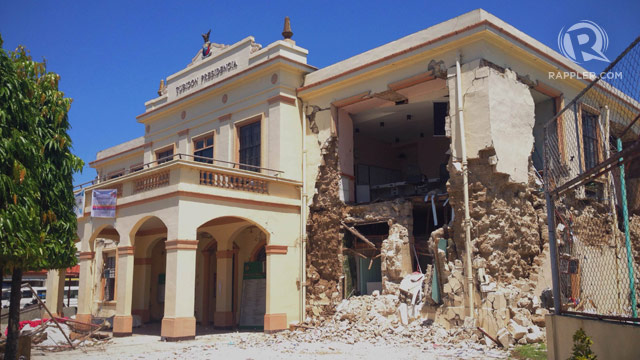SUMMARY
This is AI generated summarization, which may have errors. For context, always refer to the full article.

TAGBILARAN CITY, Philippines – A family from the town of Mabini were on their way home from an evacuation site in Tagbilaran City – a 2-hour trip on foot – when the ground shook at around 7 am on Monday, October 21.
The family, who started walking at dawn, felt it was about time to start rebuilding their destroyed shelter and to go back to their farms. However, the magnitude 5.4 aftershock turned their hope into confusion and fear once again.
They did not know that aftershocks will be felt in the next 2 to 3 weeks, as the Philippine Institute of Volcanology and Seismology (Phivolcs) earlier explained. They were not aware that they could not go back to their homes yet.
Lack of information about geological risks is not only the problem in affected areas in Bohol. Misinformation is even worse.
For example, text messages and social media posts about an “impending” magnitude 8.0 earthquake in Central Visayas are circulating. Phivolcs already said this is false information.
“It’s not true. The energy of that earthquake have been released. The chance of having a larger earthquake is very, very slim,” Dr Jane Punongbayan of Phivolcs told the Bohol Provincial Disaster Risk Reduction and Management Council (PDRRMC) over the weekend.
Countering misinformation
To counter misinformation, Punongbayan said Phivolcs experts, primarily in Bohol to survey affected areas, also visit evacuation sites to answer frequently asked questions about the disaster.
The quick reaction team went to Sagbayan, Catigbian, Danao, and the northern towns of Buenavista, Inabanga, Clarin, Maribojoc, and Loon.
One persistent question they encountered was whether a new volcano is forming in Bohol as a result of the earthquake.
“Wala po. Liquefaction ang mga na-obserbahang pagsulpot ng putik at tubig na minsan ay may mabahong amoy dahil sa lumalabas na na-trap na gases sa loob ng lupa,” Punonbayan explained.
(Reports of boiling sand with sulfuric odor that’s probably an impending sign of a growth of a volcano is not true. It’s the result of liquefaction ejecting buried soft sediments and gases.)
There is a need for a more massive informaton dissemination as the government and humanitarian aid groups coordinate early recovery efforts in affected areas.
Phivolcs advised affected people not to enter heavily damaged structures or houses and to avoid areas that appear vulnerable to landslides.
Punongbayan said those who live in damaged homes should seek help from the municipal engineers and have them checked. – Rappler.com
Add a comment
How does this make you feel?
There are no comments yet. Add your comment to start the conversation.